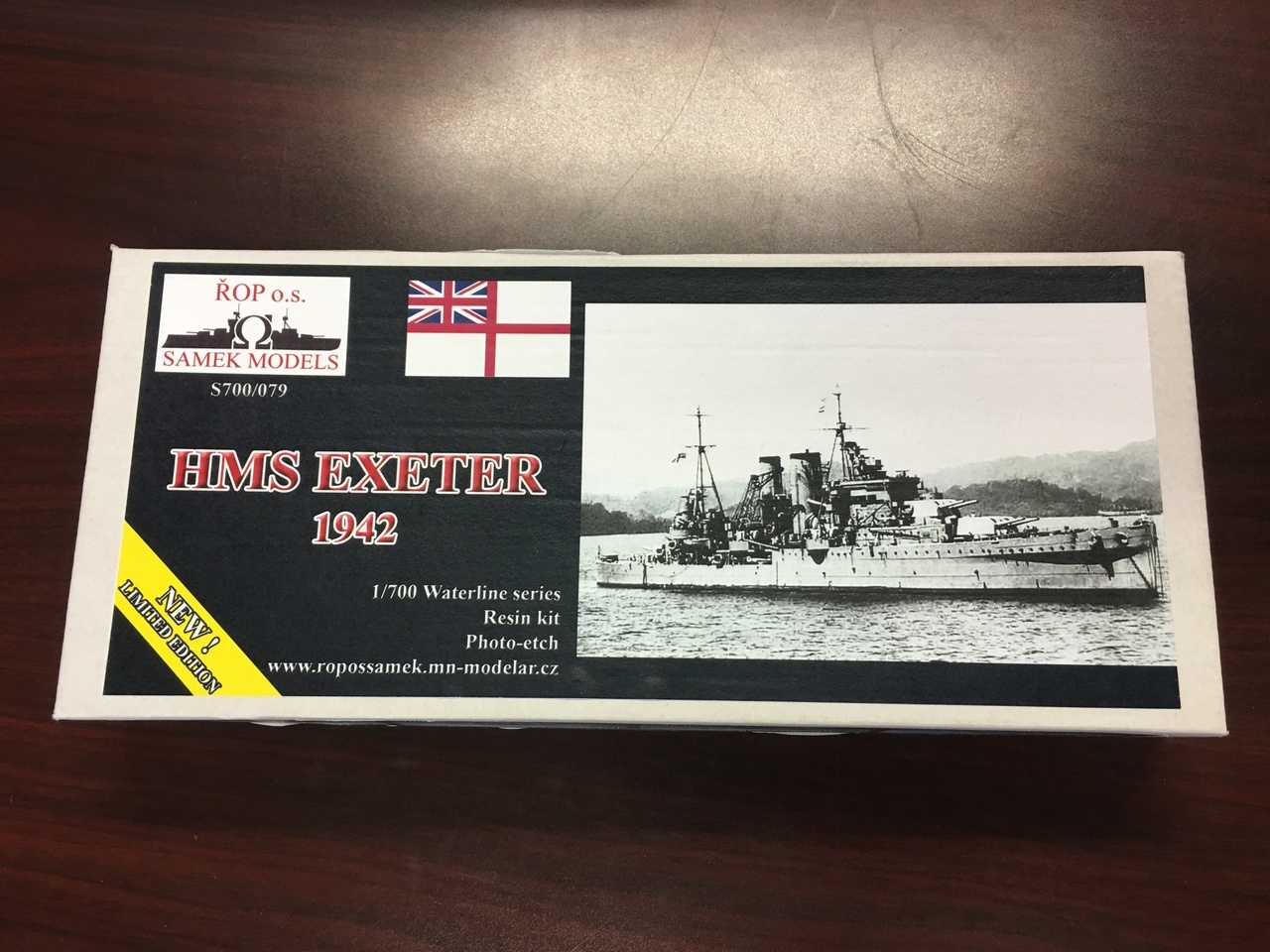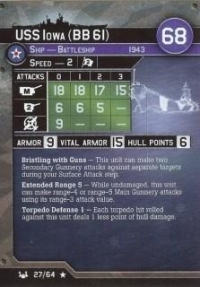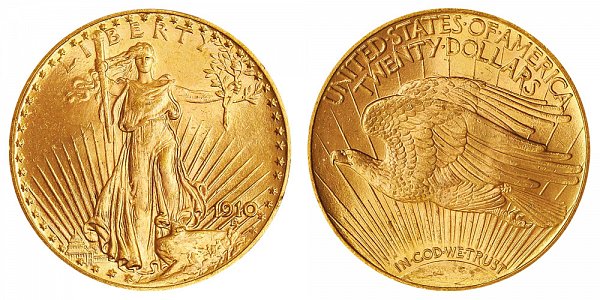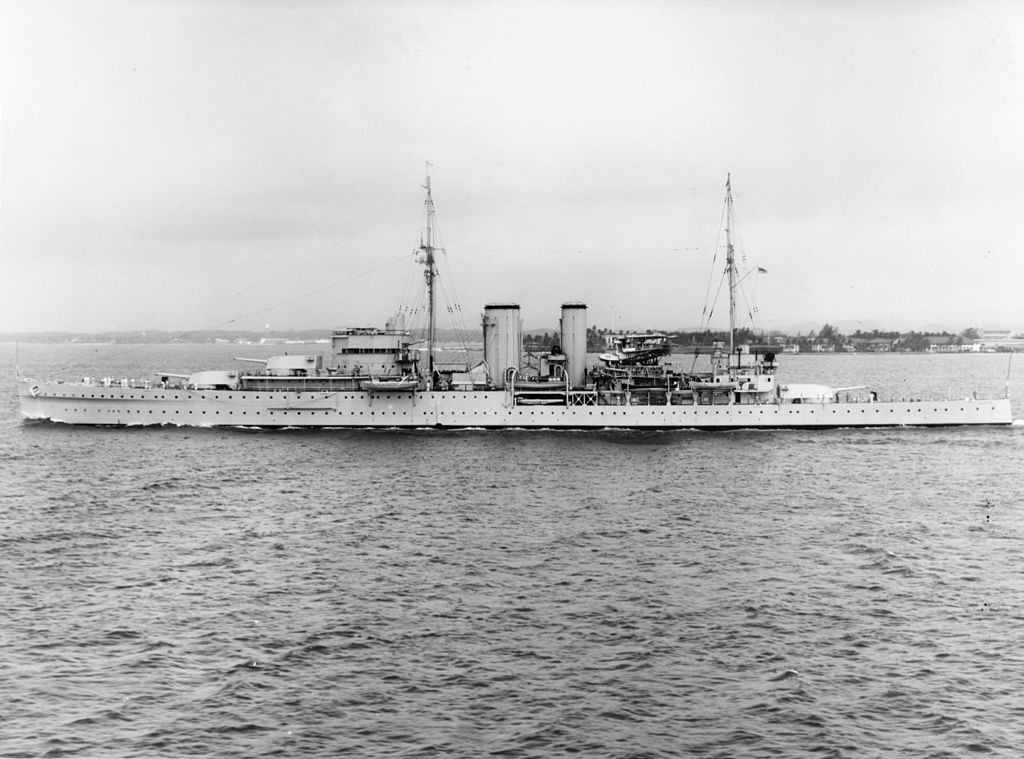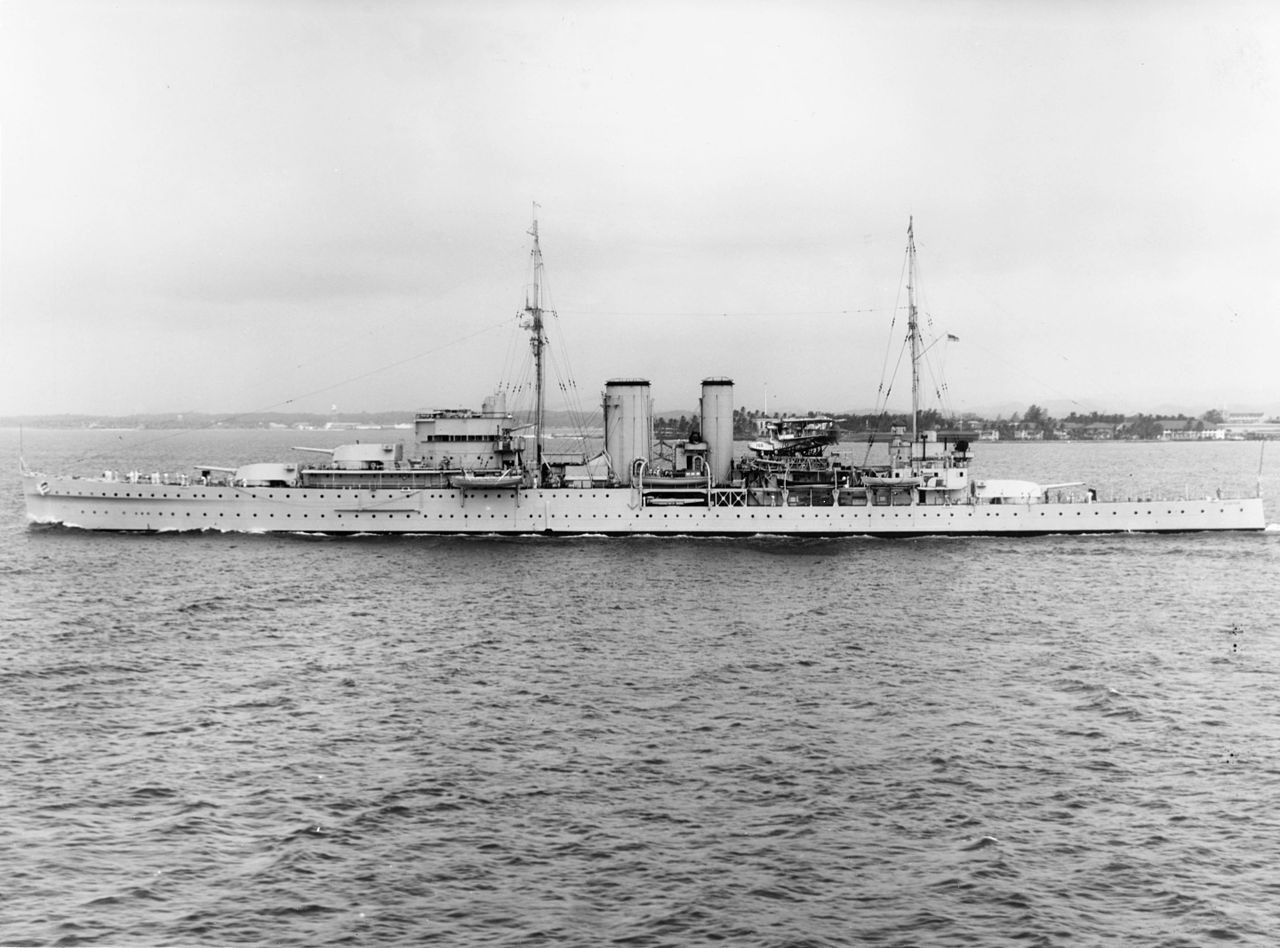Kit Components: Includes: Photoetched fret, Resin (cast)
Class: The York class was the second and final class of 8-inch (203 mm)–gunned heavy cruisers built for the Royal Navy under the terms of the 1922 Washington Naval Treaty. They were essentially a reduced version of the preceding County class, scaled down to enable more cruisers to be built from the limited defense budgets of the late 1920s.
It was initially planned to build seven ships of this class, though in the end only two were constructed—HMS York, started in 1927, and HMS Exeter, started in 1928. Exeter differed in appearance from York because of late changes in her design. The remaining ships were delayed due to budget cuts, and then following the London Naval Treaty of 1930 the Royal Navy decided its cruiser needs were best met by building a greater number of yet smaller cruisers with 6–in guns.
While both ships served vigorously in the first few years of World War II, it was Exeter that had the more lively career. Most famously, Exeter took part in the Battle of the River Plate against the German raider Admiral Graf Spee, and was badly damaged, though later she was repaired and extensively modernized. She escorted a convoy to the Pacific in late 1941, and was again heavily damage in the Battle of the Java Sea, then caught and overwhelmed a few days later by four Japanese heavy cruisers. York was sunk in Suda Bay, Crete during the British withdrawal in 1941, and was raised in 1952 and towed away to be scrapped in Italy.
It was initially planned to build seven ships of this class, though in the end only two were constructed—HMS York, started in 1927, and HMS Exeter, started in 1928. Exeter differed in appearance from York because of late changes in her design. The remaining ships were delayed due to budget cuts, and then following the London Naval Treaty of 1930 the Royal Navy decided its cruiser needs were best met by building a greater number of yet smaller cruisers with 6–in guns.
While both ships served vigorously in the first few years of World War II, it was Exeter that had the more lively career. Most famously, Exeter took part in the Battle of the River Plate against the German raider Admiral Graf Spee, and was badly damaged, though later she was repaired and extensively modernized. She escorted a convoy to the Pacific in late 1941, and was again heavily damage in the Battle of the Java Sea, then caught and overwhelmed a few days later by four Japanese heavy cruisers. York was sunk in Suda Bay, Crete during the British withdrawal in 1941, and was raised in 1952 and towed away to be scrapped in Italy.
Warship: HMS Exeter was the second and last York-class heavy cruiser built for the Royal Navy during the late 1920s. Aside from a temporary deployment with the Mediterranean Fleet during the Abyssinia Crisis of 1935–36, she spent the bulk of the 1930s assigned to the Atlantic Fleet or the North America and West Indies Station. When World War II began in September 1939, the cruiser was assigned to patrol South American waters against German commerce raiders. Exeter was one of three British cruisers that fought the German pocket battleship, the Admiral Graf Spee, later that year in the Battle of the River Plate. She was severely damaged during the battle, and she was in the shipyard for over a year.
After her repairs were completed, the ship spent most of 1941 on convoy escort duties before she was transferred to the Far East after the start of the Pacific War in December. Exeter was generally assigned to escorting convoys to and from Singapore during the Malayan Campaign, and she continued on those duties in early February 1942 as the Japanese prepared to invade the Dutch East Indies. Later that month, she was assigned to the Striking Force of the joint American-British-Dutch-Australian Command (ABDACOM), and she took on a more active role in the defence of the Dutch East Indies. The culmination of this was her engagement in the Battle of the Java Sea later in the month as the Allies attempted to intercept several Imperial Japanese Navy invasion convoys. Exeter was crippled early in the battle, and she did not play much of a role as she withdrew. Two days later, she attempted to escape approaching Japanese forces, but she was intercepted and sunk by Japanese ships at the beginning of March in the Second Battle of the Java Sea.
Most of her crewmen survived the sinking and were rescued by the Japanese. About a quarter of them died during Japanese captivity. Her wreck was discovered in early 2007, and it was declared a war grave, but by 2016 her remains had been destroyed by illegal salvagers.
After her repairs were completed, the ship spent most of 1941 on convoy escort duties before she was transferred to the Far East after the start of the Pacific War in December. Exeter was generally assigned to escorting convoys to and from Singapore during the Malayan Campaign, and she continued on those duties in early February 1942 as the Japanese prepared to invade the Dutch East Indies. Later that month, she was assigned to the Striking Force of the joint American-British-Dutch-Australian Command (ABDACOM), and she took on a more active role in the defence of the Dutch East Indies. The culmination of this was her engagement in the Battle of the Java Sea later in the month as the Allies attempted to intercept several Imperial Japanese Navy invasion convoys. Exeter was crippled early in the battle, and she did not play much of a role as she withdrew. Two days later, she attempted to escape approaching Japanese forces, but she was intercepted and sunk by Japanese ships at the beginning of March in the Second Battle of the Java Sea.
Most of her crewmen survived the sinking and were rescued by the Japanese. About a quarter of them died during Japanese captivity. Her wreck was discovered in early 2007, and it was declared a war grave, but by 2016 her remains had been destroyed by illegal salvagers.
Item created by: gdm on 2019-07-31 15:34:06
If you see errors or missing data in this entry, please feel free to log in and edit it. Anyone with a Gmail account can log in instantly.
If you see errors or missing data in this entry, please feel free to log in and edit it. Anyone with a Gmail account can log in instantly.


